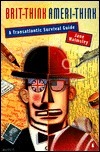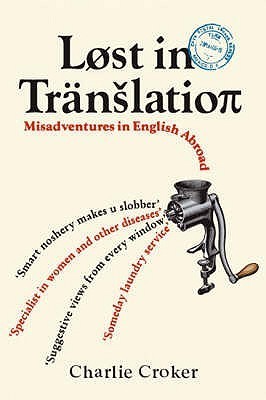
Brit-Think, Ameri-Think: A Transatlantic Survival Guide
Book Description
Bridging continents, 'Brit-Think, Ameri-Think' is a lively exploration of cultural clashes and confounding misunderstandings that shape transatlantic relationships. With sharp wit, Jane Walmsley uncovers the nuanced nuances of British and American mindsets, unraveling everything from humor to hospitality. Characters emerge in the form of differing perspectives, illuminating how language, customs, and humor can ignite conflict or build bridges. Each page crackles with revelations, offering transformative insights that resonate deeply in an interconnected world. As these cultural threads intertwine, one question lingers: Can empathy truly bridge the vast ocean of difference?
Quick Book Summary
"Brit-Think, Ameri-Think" by Jane Walmsley is a witty investigation into the complex world of British and American differences. Through sharp observation and humor, Walmsley dissects the subtle, and sometimes glaring, distinctions in mindset, language, customs, and humor between the two cultures. The book uses real-life examples and playful analysis to unravel how communication misfires, hospitality expectations, and even attitudes toward privacy can fuel confusion and comedy. Walmsley’s keen eye exposes how these cultural framings are not merely superficial quirks, but deep-rooted worldviews that affect relationships and interactions. Both a survival guide and a compass, the book ultimately steers readers toward a greater empathy and appreciation for the vast and fascinating transatlantic divide.
Summary of Key Ideas
Table of Contents
Contrasts in Language and Communication
Walmsley begins by highlighting the profound effects of language on transatlantic understanding. American directness often clashes with British understatement, where intent and meaning can be wrapped in layers of irony or politeness. Everyday phrases and expressions, innocuous on one side of the ocean, may imply something entirely different—or even be offensive—on the other. These linguistic differences are woven into the fabric of daily communication, frequently leading to mutual bewilderment and comic mishaps.
Divergent Humor and Social Codes
Humor, Walmsley illustrates, is a microcosm of the cultural gap. British humor, steeped in irony, self-deprecation, and subtlety, rarely lands as intended with Americans, who often favor obvious punchlines and a more earnest comedic style. This divergence goes beyond laughter; it encapsulates how each culture handles vulnerability and social hierarchy. Misunderstandings around jokes become metaphors for larger issues of social interaction, with each side baffled by the other’s preferences.
Approaches to Politeness and Hospitality
A major theme is the difference in hospitality and social customs. Walmsley details how Americans tend to be more effusive and overtly welcoming, eager to assimilate newcomers and display friendliness. In contrast, British reserve leads to a more private, sometimes seemingly aloof approach to hosting and friendship. These differences can leave visitors feeling alternately smothered or stranded, revealing how cultural scripts for treating guests are tied to deeper ideas about intimacy and inclusion.
Attitudes Toward Privacy and Individualism
The book also examines attitudes toward privacy and personal boundaries. Walmsley describes how the British often value personal privacy, viewing casual sharing of personal information as intrusive, whereas Americans embrace openness as a sign of friendliness and trust. These distinct perspectives influence not only conversation but also expectations of space, emotional sharing, and even problem-solving—sometimes escalating minor social encounters into major misunderstandings.
Empathy as a Bridge Across Differences
Despite this detailed accounting of contrasts, Walmsley remains optimistic about cross-cultural understanding. She suggests that empathy and active curiosity are vital to bridging the transatlantic divide. By recognizing both the humor and the seriousness underlying our differences, readers are encouraged to approach cultural clashes as opportunities for growth and connection. In the end, the book invites reflection: empathy does not erase distinctions, but it does transform difference from a barrier into a bridge.
Download This Summary
Get a free PDF of this summary instantly — no email required.





